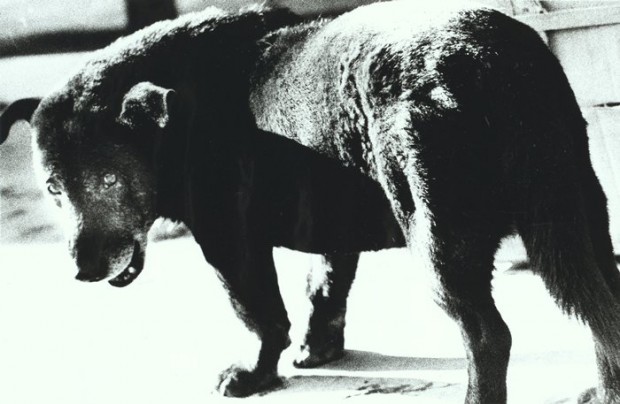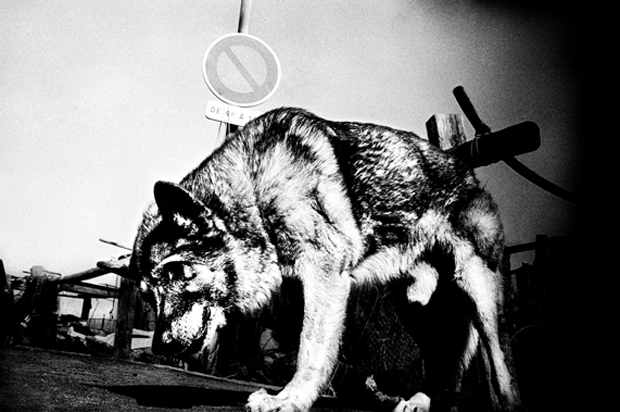An iconographic and text archive related to communication, technology and art.
☛ Anders Petersen: “Untitled” (dog), part of the Sète no. 8 series, silver-based black-and-white 35 mm film, 2008. First published in Sète # 08, Images en Manoeuvres, 65 black & white photos, 8¼x10″, 96 pp., 2009.
Anders Petersen is a Swedish photographer born in 1944. This particular image caught my eyes because it reminded me of the famous “Stray Dog” photo by Daido Moriyama (1971).

For more about Daido Moriyama, see those two previous entries: Daido Moriyama Photographs and Untitled (Fish Head) by Daido Moriyama (1978)
Both photographers seem to share a common interest in documentary photography (Petersen calls it “private documentary”; his work was compared to that of Robert Frank). Both Moriyama and Petersen clearly avoid working from a distance, preferring immersing themselves in the environment they are studying (Moriyama walking the street of Japan, Petersen living in cafés and prisons). They both like to use a grainy, high-contrast black-and-white film medium to render the raw intimacy of the scenes and subjects they are able to capture in this process.
In 2006, the photography blog lens culture produced a short profile of Anders Petersen along with an 18 mins audio interview:
Anders Petersen, one of the most important European photographers living today, has been shaking up the world of photography ever since his debut of raw and intimate photographs of late-night regulars in a Hamburg bar in the 1960s. That body of work was published as a book, Café Lehmitz, which is now widely considered a seminal work in the development of European photography. (On par with, but very different from, Robert Frank’s The Americans).
It is practically impossible to separate the man from his photography. He carries his small Contax T3 always, and captures beauty in some of the most unlikely places. With his camera, he records an intensely curious and personal diary. (read more: “No photograph without … longing” by Jim Casper, 2007)
The photos from the Sète no. 8 series where published in a book in 2009. The book can be previewed at photo-eye (Flash is required).
For more about Anders Petersen see the following links:
-
Anders Petersen official website (Flash is required for some features): biography, selected works (from his famous series: Café Lehmitz, Close Distance, Groningen, Mental Hospital, Prison, etc.), news, books and more.
-
Everyday I Show (LiveJournal) has a great gallery of medium to large reproductions of 35 photos form the Café Lehmitz series (they were publish in a book in 1978: see Amazon).
-
Galerie VU offers a nice selection of medium format photos of Petersen’s major series: from Du mich auch (1967-1970) all the way to SoHo (2011).
-
Below is a video featuring Anders Petersen produced for the website Time in Turkey (8 mins, uploaded on January 2012). The website itself has a longer interview in text format alongside a biography and some relevant quotes. There’s an interesting coincidence worth noting about the value of black-and-white photography. In the text interview, Petersen explains:
I think there are many more colors in black and white photography than in colored photography.
Hungarian filmmaker Béla Tarr said quite exactly the same thing during an interview in 2011
“For me it is more colorful than color,” Béla Tarr told the Furman audience on Sunday of his reasons for working primarily in black and white. (“I’m not a filmmaker anymore” by Eugene Hernandez, October 10, 2011)
- By Philippe Theophanidis
- on
- ― Published in Art, Photography
- Tagged: Anders Petersen, animal, documentary, dog, intimacy, Lost

